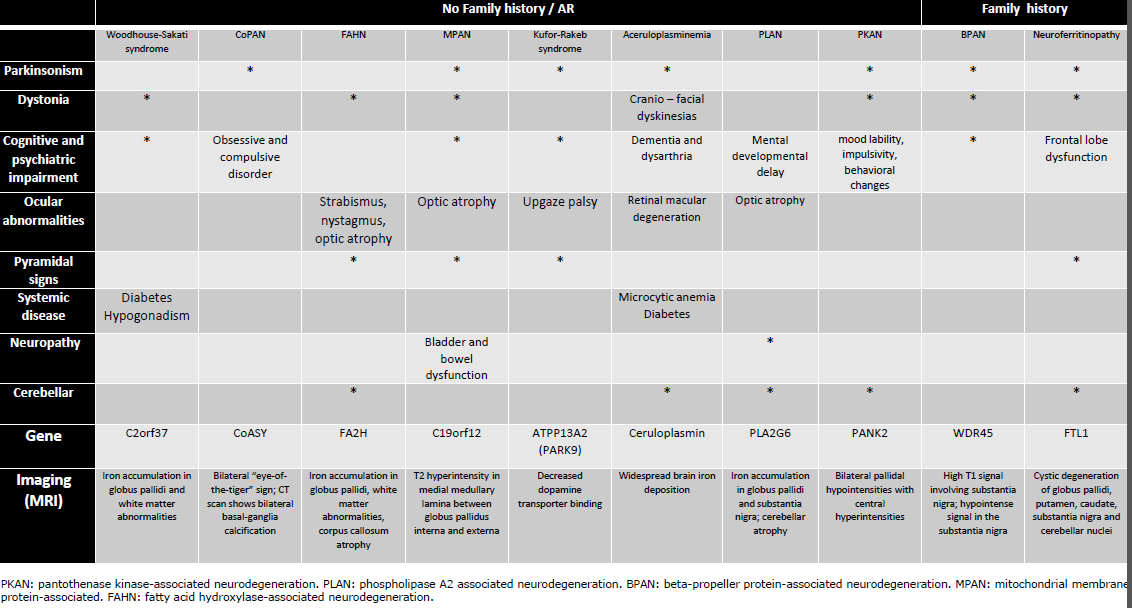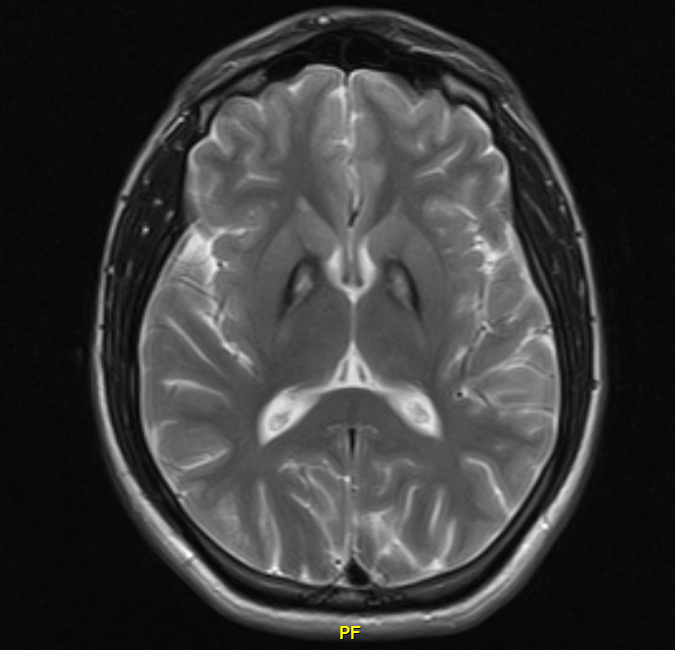Category: Genetics (Non-PD)
Objective: To describe the case of a patient with PKAN in Mexico, where we have a few information about inherited movement disorders, which makes the diagnosis a complex challenge.
Background: NBIA represents a heterogeneous group of inherited neurodegenerative diseases, characterized by excessive iron accumulation, particularly in the basal ganglia. The clinical context is critical, but neuroimaging features can reveal key diagnostic clues for the various subtypes of NBIA, and that together should guide the physician in the investigation of genetic testing (Table1).
Method: A case report.
27-year-old man, originally and resident of Puebla, Mexico, with no history of paternal consanguinity or degenerative family disorders. At ten years of age he began with alteration in the march (he used the tips to walk). After two years, he added frequent falls by stumbling not associated with visual disturbances, difficulty articulating language two years later, with irregular and wide abnormal movements in upper and lower extremities, consistent with chorea. Upon reaching the age of 13, a bilateral decrease in visual acuity, with apathy and inattention, with greater motor impairment that requires bilateral support for walking due to lower limb muscle contractures.
Results: Liver and thyroid function, electrolytes, ceruloplasmin, and serum copper, were normal. In brain MRI, it was observed the iconical “eye of the tiger” sign (Figure1), produced by pathological iron accumulation [1]. In the genetic study, 2 genomic variants identified in the PKA2 gene were obtained, being compatible with a definitive diagnosis of PKAN [2].
Conclusion: PKAN presents severe generalized dystonia, spasticity, visual loss, dysphagia and dementia as in this patient; speech problems (hypophonia, palilalia, dysarthria, and stuttering) and neuropsychiatric symptoms are characteristic of atypical/later‐onset presentations [3]. Defects in the gene encoding the PANK2 enzyme, in turn, generate neurodegeneration due to iron accumulation in the brain (NBIA).
Determine the ethiology of pathological iron acummulation in brain implies an approach that includes a detailed clinical history that reports on varied and systemic neurological symptoms and signs, also imaging and genetic alterations [4].
References: 1. Mulroy, E., Balint, B., Adams, M.E., Campion, T., Merello, M. and Bhatia, K.P. (2019), Animals in the Brain. Mov Disord Clin Pract, 6: 189-198. doi:10.1002/mdc3.12734
2. Sethi KD, Adams RJ, Loring DW, et al. Hallervorden-Spatz Hallervorden-Spatz
syndrome: Clinical and magnetic resonance imaging correlations. Ann Neurol 1998;24:692-94. doi: 10.1002/ana.410240519.
3. Crompton DE, Chinnery PF, Bates D, et al. Spectrum of movement disorders in neuroferritinopathy. Mov Disord. 2005;20(1):95-99. doi:10.1002/mds.20284
4. Kumar N, Rizek P, Jog M. Neuroferritinopathy: Pathophysiology, Presentation, Differential Diagnoses and Management. Tremor Other Hyperkinet Mov (N Y). 2016;6:355. Published 2016 Mar 17. doi:10.7916/D8KK9BHF
To cite this abstract in AMA style:
M. Arbeu Reyes, B. Madariaga Cortés, C. Aguilar Vázquez. Neurodegeneration associated with pantothenate kinase in a Mexican Patient: Solving the Diagnostic Challenge of the Eye of Tiger [abstract]. Mov Disord. 2022; 37 (suppl 2). https://www.mdsabstracts.org/abstract/neurodegeneration-associated-with-pantothenate-kinase-in-a-mexican-patient-solving-the-diagnostic-challenge-of-the-eye-of-tiger/. Accessed April 18, 2025.« Back to 2022 International Congress
MDS Abstracts - https://www.mdsabstracts.org/abstract/neurodegeneration-associated-with-pantothenate-kinase-in-a-mexican-patient-solving-the-diagnostic-challenge-of-the-eye-of-tiger/


